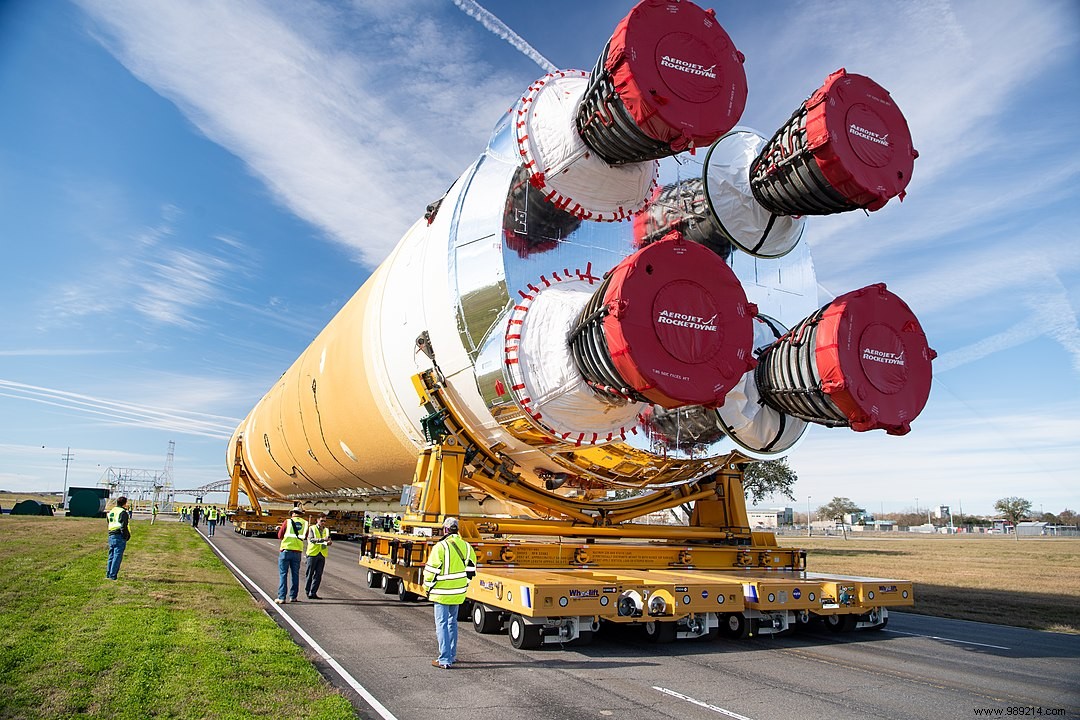As NASA continues to prepare the Space Launch System (SLS) rocket for its highly anticipated Artemis I mission, its partners continue to build other launch vehicles for subsequent missions that aim to return humans to and around the Moon.
The United States aims to set foot on the Moon, a first since the end of the Apollo era. To do this, NASA is developing a program called Artemis. Its new workhorse is a new super-heavy launcher named Space Launch System (or SLS). The vehicle is currently undergoing tests in Florida before beginning its wet dress rehearsal during which propellant will be added to the rocket's fuel tanks. If all goes as planned, NASA will then be able to launch its long-awaited Artemis 1 mission.
For this flight, the SLS will propel an uncrewed Orion ship into space. The latter will circle the Moon before returning to Earth.
However, remember that this new super-heavy launcher is not reusable . Thus, each flight will require a new vehicle. Also, NASA and its partners (about a thousand companies across America) are already working to prepare the rockets that will launch future missions.
“The Space Launch System Team is not just building one rocket, but is building multiple rockets for exploration missions and future SLS flights beyond from the initial launch of Artemis ", says John Honeycutt, SLS program manager at NASA's Marshall Space Flight Center in Huntsville, Alabama. “The Artemis I mission is the first in a series of increasingly complex missions that will expand our presence on the Moon “.

The Intermediate Cryogenic Propulsion Stage (ICPS), the highest stage ultimately responsible for propelling the Orion capsule into space, for Artemis II arrived in Florida last July. It is undergoing final readiness at Boeing and United Launch Alliance (ULA) facilities and will soon be delivered to NASA's Kennedy Space Center.
ULA is also already building the ICPS for Artemis III at its factory in Decatur, Alabama. As a reminder, it is within the framework of this mission that humans will rest their feet on the Moon, probably in 2025 .
Boosters and RS-25 engines (the main propulsion elements of the rocket) for the Artemis II and Artemis III missions are also in the final stages of assembly. In Utah, crews from Northrop Grumman, the prime booster contractor, have completed casting all supercharger segments for Artemis II and Artemis III and have begun casting segments for Artemis IV.
Aerojet Rocketdyne, which develops the RS-25 engines, has already manufactured those that will power the next two SLS flights after Artemis I. Those of Artemis II are already ready to be sent at NASA's Michoud Assembly Plant in New Orleans, where they will be integrated into the SLS core stage. The Artemis III engines are being tested at NASA's Stennis Space Center in Mississippi, while those for missions IV, V and VI are under construction.
Finally, remember that each main stage is built by Boeing in their factory in New Orleans. That of the Artemis I mission is obviously already ready, while those of the Artemis II, III and IV missions are in the process of being assembled.